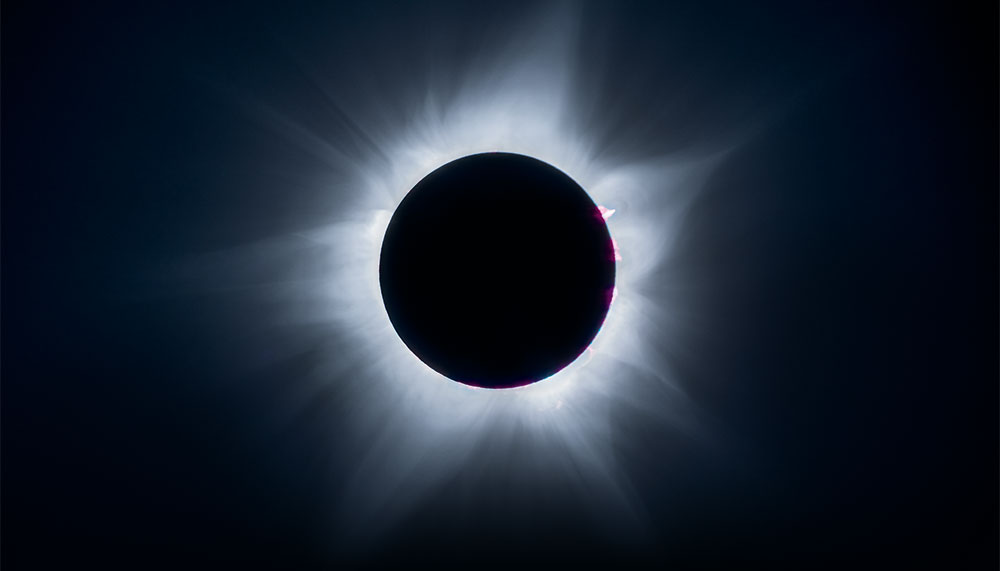A total solar eclipse attracts thousands of people from around the world to a small Western Australian town.
Story Mandy McKeesick Photo Roger Groom
At 10am on April 20, in the crowded Town Beach park in Exmouth, WA, a cry goes out in Iranian: “It has started, it has started.” The hundreds of people gathered here adorn special glasses and turn their eyes skyward as the moon begins a 3-hour passage across the face of the sun. Three Estonians – Harri Lensen (10th eclipse), Anton Toul (9th eclipse) and Hindrek Lootua (8th eclipse) – move among the crowd with an inflatable globe, pointing to show people where they are from, and periodically strip to briefs and run to the water to cool themselves from the Australian heat. First-timers such as Becky Wheller, wearing a Pink Floyd shirt to commemorate 50 years of The Dark Side of the Moon, wonder what all the fuss is really about but have come here regardless. Families gather at the water’s edge and owners put glasses on their dogs. A cruise ship stands offshore. Moving becomes difficult through a forest of tripods and telescopes and cameras. Crescent shadows appear on the ground. A television crew joins the party.
At 11.25am there is a change. The light becomes brassy. The temperature drops. People report feeling disorientated and unbalanced, and then there is a roar from the crowd as the world goes dark. Stars appear, Jupiter and Venus shine and glasses are tossed aside for a precious 53 seconds as the sun’s corona appears in all the white brilliance of totality. This is why eclipse chasers have come from around the world and this is when first-timers are converted. “I’m shocked and overwhelmed and not sure how to put it into words,” Becky says. “That was one of the most beautiful things I’ve ever seen.”
This story excerpt is from Issue #149
Outback Magazine: June/July 2023









